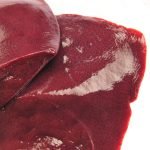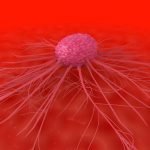The Use of Aromatic Therapies In the Treatment of Cancer
Shaida Sina, ND
Cancer is a complex disease state that requires a holistic approach to treatment. Aromatic therapies may provide valuable adjunctive treatment options. Some of the areas which are currently being explored in relation to aromatic therapies include tumor infection, psycho-spiritual healing, cancer miasm, and antitumor and immunomodulating properties.
Tumor Infection
Last year a pilot study was published in the Journal of Clinical Oncology entitled, “Antibacterial Essential Oils Reduce Tumor Smell and Inflammation in Cancer Patients”. A 67-year-old patient presenting with a large inoperable buccal squamous cell carcinoma was treated for a suprainfection that produced a malodorous fistula. It is important to note that the patient came in for treatment because the infection produced an intolerable smell. The necrotic neoplastic ulcer was cultured and found to have anaerobic suprainfection. He was given oral clindamycin 600 mg twice a day for a five day course, and a topical essential oil combination of eucalyptus (Eucalyptus globulus) and tea tree (Melaleuca alternifolia). The fistula was washed with 5 mLs of the essential oil combination twice a day. After three days of the essential oil treatment, the patient’s malodor had completely resolved. Treatment of essential oil wash was continued as post-care for six weeks. Two and a half weeks into therapy, clinical signs of suprainfection were virtually resolved. Essential oil therapy was discontinued after the sixth week when the fistula appeared clean and was healing by secondary intention. The article noted that the essential oil therapy did not reduce tumor growth, but aided with wound healing and helped with the well-being of the patient due to resolving the malodor of the infected tumor. Tea tree has been shown to reduce melanoma growth in other studies.
Psycho-spiritual Healing
The psycho-spiritual approach to treating cancer is based on the idea that humans are more than a physical body. It is thought that humans have a physical, emotional, mental, and spiritual body. This treatment approach asserts that essential oils have the unique ability to heal each of these bodies because the energy of the plant can communicate with the soul of the patient. This may be why some people respond differently to smells.
In a recent double-blind placebo study, essential oils were used to treat anxiety and depression in 313 cancer patients undergoing radiation therapy. Half the patients received a carrier without fragrance and the other half received a combination of lavender, bergamot, and cedar essential oils. In the study, vitals were taken along with the assessments Hospital Anxiety and Depression Scale (HADS) and Somatic and Psychological Health Report (SPHERE). The study showed that there was no significant reduction in depression when comparing the two groups. However, the HADS showed the carrier group had significant reduction in anxiety.
This study was very disappointing because the researchers concluded that aromatherapy had no benefit. It is important, however, to understand that this study had a couple of flaws. First, a combination of essential oils should not be used to assess outcome. Second, the psychological aspect of what emotions evoke in patients was not taken into account. For example, lavender has long been thought to be calming and uplifting. On the psycho-spiritual level lavender is thought to represent mother energy. Lavender may be great for those who have no mother issues or have a great sense of divine benevolent mother figure. Smells can trigger positive or negative memories, which are highly individual. Here is a thought-provoking idea, “How does a woman respond to lavender who has breast cancer?”. The type of cancer may have a significant response to smell. There are those who believe that breast cancer is a nurturing issue. Understanding the psycho-spiritual aspect of aromatherapy can open up an entire area of healing. This is why in the hands of someone who does mind-body therapy, it can be a very useful tool.
Cancer Miasm
Amidst the aromatherapists a new topic is coming up, “Essential Oils and the Cancer Miasm”. The cancer miasm is a homeopathic concept which has now been adapted to a broader scope. An individual may show a strong disposition toward the cancer miasm, but never in their lifetime suffer from cancer. Again, the miasm is not an actual disease state, but a set of constitutional characteristics and reactional tendencies that resemble the pattern of that particular disease. In identification of these characteristics of cancer miasms, a corresponding essential oil may be recommended. The essential oils that fall into the area of cancer miasm include: angelica (Angelica archangelica), frankincense (Boswellia carterii), lgeranium (Pelargonium graveolens), ginger (Zingiber officinalis), Lemon (Citrus limonum),nNeroli (Citrus aurantium), patchouli (Pogostemon cablin), pine (Pinus sylvestris), and violet leaf (Viola odorata). Most of these oils contain the chemical constituent limonene and related terpenoids, which have been shown to be effective in the treatment of cancer. For more information on the subject, see Dr. Bruce Berkowsky’s book, “Essential Oils and the Cancer Miasm”.
Direct Antitumor and Immunomodulating Properties
It is interesting to note that direct antitumor effects and immunomodulation is a big topic of research in phytochemistry; in particular, the use of essential oils. Most of these studies are being conducted overseas. There is evidence that several additional oils not mentioned in cancer miasm may be truly noteworthy. These essential oils are now being found to have antitumor activity; they include garlic, (Allium sativa), cumin (Curcuma zedoaria), tea tree (Melaleuca alternifolia), bitter orange (Citrus xaurantium), and conifer (Tetraclinis articulate).
 Shaida Sina, ND has been working in the field of medicine for over 20 years. Her initial training began as a clinical scientist where she received her BS from University of Maryland’s School of Medicine Department of Medical Research Technology. During her first 10 years in healthcare she worked in the field of laboratory medicine where she ultimately became lead technologist of a reference infectious disese laboratory. Dr. Sina began her studies in natural medicine in 1995 at SCNM and was the first naturopathic physician to do a clinical rotation at Mayo Clinic where she trained in reproductive endocrinology. Her areas of clinical focus include women’s healthcare, pediatrics and general family practice.
Shaida Sina, ND has been working in the field of medicine for over 20 years. Her initial training began as a clinical scientist where she received her BS from University of Maryland’s School of Medicine Department of Medical Research Technology. During her first 10 years in healthcare she worked in the field of laboratory medicine where she ultimately became lead technologist of a reference infectious disese laboratory. Dr. Sina began her studies in natural medicine in 1995 at SCNM and was the first naturopathic physician to do a clinical rotation at Mayo Clinic where she trained in reproductive endocrinology. Her areas of clinical focus include women’s healthcare, pediatrics and general family practice.
References
- Arias BA, Ramon-Laca L. Pharmacological properties of citrus and their ancient and medieval uses in the Mediterranean region. J Ethnopharmacol 2005;97(1):89-95.
- Buhagiar JA, Podesta MT et al. The induction of apoptosis in human melanoma, breast and ovarian cancer cell lines using an essential oil extract from the conifer Tetraclinis articulata. Anticancer Res 1999;19(6B):5435-43.
- Calcabrini A, Stringaro A et al. Terpinen-4-ol, the main component of Melaleuca alternifolia (tea tree) oil inhibits the in vitro growth of human melanoma cells. J Invest Dermatol 2004;122(2):349-60.
- Chudzik L. Cancer and Aromatherapy – “Bringing Light to Darkness”. Available at: http://www.naha.org/articles/cancer_and_aromatherapy.htm.
- Graham PH, Brown L et al. Inhalation aromatherapy during radiotherapy: results of a placebo-controlled double-blind randomized trial. J Clin Oncol 2003;21(12):2372-6.
- Lai EY, Chyau CC et al. Antimicrobial activity and cytotoxicity of the essential oil of Curcuma zedoaria. Am J Chin Med 2004;32(2):281-90.
- Warnke PH, Sherry E et al. Antibacterial essential oils reduce tumor smell and inflammation in cancer patients. J Clin Oncol 2005;23(7):1588-9.
- Wu CC, Chung JG et al. Differential effects of allyl sulfides from garlic essential oil on cell cycle regulation in human liver tumor cells. Food Chem Toxicol 2004;42(12):1937-47.









